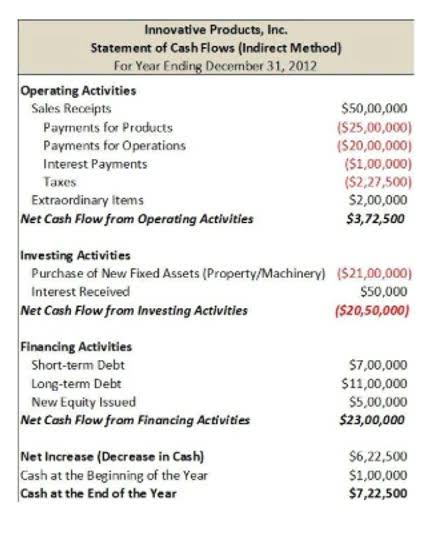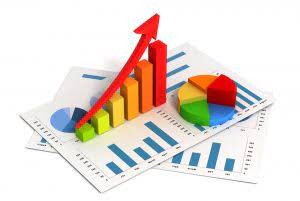
Before calculating the direct labour costs per unit you need to know how to calculate the direct hourly labour rate and direct labour hours. To reduce manufacturing overhead costs, focus on improving efficiency, reducing waste, negotiating better supplier contracts, and investing in technology to automate tasks. Direct materials encompass the raw materials and components that directly contribute to the production of goods. These materials are transformed during the manufacturing process into the finished product.

Pledging allegiance to the United States of ‘thieves’

According to McKinsey’s research, cutting down manufacturing costs, in addition to boosting productivity, is the key for manufacturing companies to remain competitive. Calculating the cost of goods manufactured helps businesses determine the total cost incurred in producing goods ready for sale, aiding in pricing decisions and financial reporting. Direct labor cost is computed by multiplying the total hours worked by the labor rate per hour, including any additional benefits or payroll taxes.
- As employees use Clockify to clock in and out, employers gain insights into the total number of hours each employee worked on each production line.
- Direct materials are the actual physical materials needed in order to manufacture products.
- For instance, automated assembly lines can increase production speed and accuracy while minimizing labor-intensive tasks, thereby lowering overall manufacturing expenses.
- The total manufacturing cost formula is a simple equation in which all of these are added together.
- Suppliers often offer discounts for bulk purchases or extended contracts, which can reduce your material costs.
- Selecting the right method depends on which factor, labor or machines, drives most of your costs.
- To determine the total manufacturing cost for the production of your finished product, add the direct materials cost with the direct labor costs and the manufacturing overhead costs.
Total Manufacturing Cost FAQs
Essentially, production costs encompass all direct and indirect costs of running a business. The calculation income statement for total manufacturing cost involves a detailed accounting for the costs of materials, labor and overhead. It requires a realistic analysis of a company’s various departments to show their contribution to the manufacturing process and the costs of those contributions.

What are the main components of total manufacturing cost?
But they also serve as a means of monitoring labor costs to make sure you’re not overspending your budget. Managers can view virtual accountant timesheets to monitor labor costs and get further information by generating a timesheet report. As you can see, manufacturing costs and production costs are closely linked. To more efficiently keep tabs on your production schedule to ensure profitability, download our free production template for Excel.
Which of these is most important for your financial advisor to have?
Changing production methods to better utilise raw materials is another way manufacturer can reduce direct material waste. Producing too much stock in advance means you are spending a lot more on direct material costs. Equally, you will also incur the costs of holding excess inventory stock or risk being left with stock you cannot sell. Understanding total manufacturing costs is an important step for those who want to improve manufacturing productivity. First, determine how many hours of work are directly involved in manufacturing the product.

- You can link dependent tasks to avoid costly delays and set milestones to track progress.
- This includes all materials that can be traced directly to the finished product.
- To find the total manufacturing cost, you must calculate the total wages paid to direct labor during a specific period.
- However, in cases where all materials are used, the COGM and total manufacturing cost would be the same.
- Kavitha Simha is a productivity author and researcher, passionate about finding smarter ways to manage time.
The total manufacturing cost variance is the negative or positive gap between the actual and the standard manufacturing costs. Madis is an experienced content writer and translator with a deep interest in manufacturing and inventory management. Combining scientific literature with his easily digestible writing style, he shares his industry-findings by creating educational articles for manufacturing novices and experts alike. Collaborating with manufacturers to write process improvement case studies, Madis keeps himself up to date with all the latest developments and challenges that the industry faces in their everyday operations. Robust MRP systems can track production costs both per period, per project, or per product, making them suitable for both job shops as well as make-to-stock manufacturers.
When you’re running a complicated manufacturing operation with many moving parts, again, efficiency is key. That’s where it’s valuable to enlist the capability of an ERP system that can help you manage your total manufacturing costs. An Enterprise Resource Planning system is software that can help you manage all of the core supply chain, manufacturing, services, financial and other processes related to your organization. It can be total manufacturing cost used to help you simplify, plan, budget, automate and accurately report on your operations. Put simply, ERP software allows you to reduce the use of unnecessary resources without sacrificing quality. It’s important to distinguish between direct and indirect manufacturing costs.
Calculating the overhead cost for manufacturing one unit
Knowing how to find total manufacturing costs allows businesses to compete better in the market and optimize their production processes. Manufacturing overhead is any costs related to the manufacturing of a product that isn’t direct materials costs or labor costs. These can include indirect labor costs, such as wages for supervisors and the material handling team. Indirect materials costs are also part of manufacturing overhead, such as the purchase of lubricants, grease and water that aren’t used as raw materials. Accurately calculating total manufacturing costs is essential for profitability.
